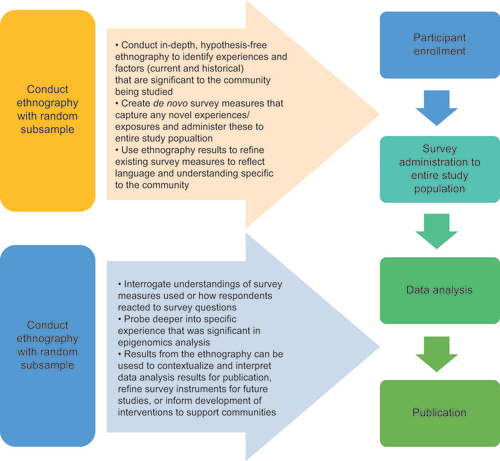Figures & data

Note that sample size for the ethnographic sub-study will be determined by how many sub-populations are included in the main study population. If multiple sub-populations are present in the larger study (i.e., different racial/ethnic or socioeconomic groups or participants of different genetic ancestry), then a random subsample will need to be taken from each. At the very least, ethnographic interviewing can be utilized in the above model. However, we recommend deeper ethnographic work to uncover less obvious experiences and factors that investigators may be able to observe but informants may not be able to articulate themselves.

